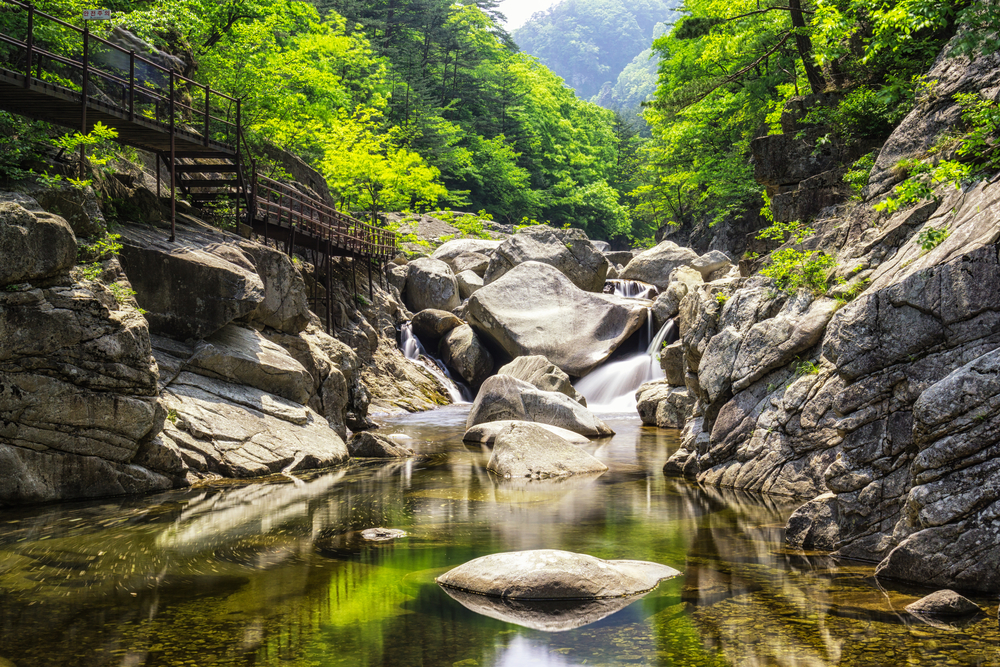Odaesan Overview
Odaesan National Park, located in the central-eastern region of South Korea, is a serene and spiritual haven renowned for its lush forests, sacred mountains, and tranquil Buddhist temples. The name “Odaesan” translates to “Five Plains Mountain” in Korean, referencing its five peaks that crown the landscape. Covering approximately 123.4 square miles (319.3 square kilometers), the park is situated within Gangwon Province and forms part of the Baekdudaegan Mountain Range, which is considered the spiritual backbone of the Korean Peninsula.
The terrain of Odaesan National Park is characterized by its rolling, forested mountains, verdant valleys, and numerous streams that flow into the larger Han River system. The park’s highest peak, Birobong, rises to 5,098 feet (1,554 meters) and offers breathtaking panoramic views of the surrounding countryside. The lower slopes and valleys are densely populated with broadleaf and coniferous forests, including species such as Korean pine, maple, and Mongolian oak. In autumn, these trees burst into vibrant shades of red, orange, and yellow, making the park a popular destination for leaf-peeping. The park is also home to Woljeongsa Temple, an iconic cultural and spiritual landmark set against a backdrop of towering fir trees that line the temple’s entrance.
Odaesan National Park hosts a rich array of wildlife, which adds to its allure. It provides a sanctuary for several mammals, including the elusive Korean goral, Siberian musk deer, and Asiatic black bear, all of which are emblematic of Korea’s mountainous ecosystems. Bird enthusiasts will be delighted by the opportunity to spot species such as the black woodpecker, hazel grouse, and the rare golden eagle. The park’s diverse flora and fauna are supported by its varied ecosystems, which range from alpine meadows to riverine environments.
One of the park’s most popular features is the Fir Tree Forest Path leading to Woljeongsa Temple, an iconic walking trail that offers an almost meditative experience through rows of centuries-old fir trees. Visitors are also drawn to Sangwonsa Temple, another historic Buddhist site nestled deep in the mountains. The park’s hiking trails vary in difficulty, with the routes to Birobong Peak being particularly rewarding for their scenic beauty and sense of achievement. In winter, the snow-covered landscape transforms the park into a wonderland, attracting photographers and those seeking quiet reflection.
Odaesan National Park faces conservation challenges, including habitat fragmentation and the effects of climate change, which threaten its biodiversity. However, significant successes in habitat restoration and wildlife monitoring have helped sustain populations of endangered species. The Korean government and local communities have collaborated to promote eco-tourism and raise awareness about the park’s ecological significance, ensuring its preservation for future generations.










































































